Find the Good and Praise It: The Story of Alex Haley
The author of The Autobiography of Malcolm X and Roots left behind a remarkable legacy.
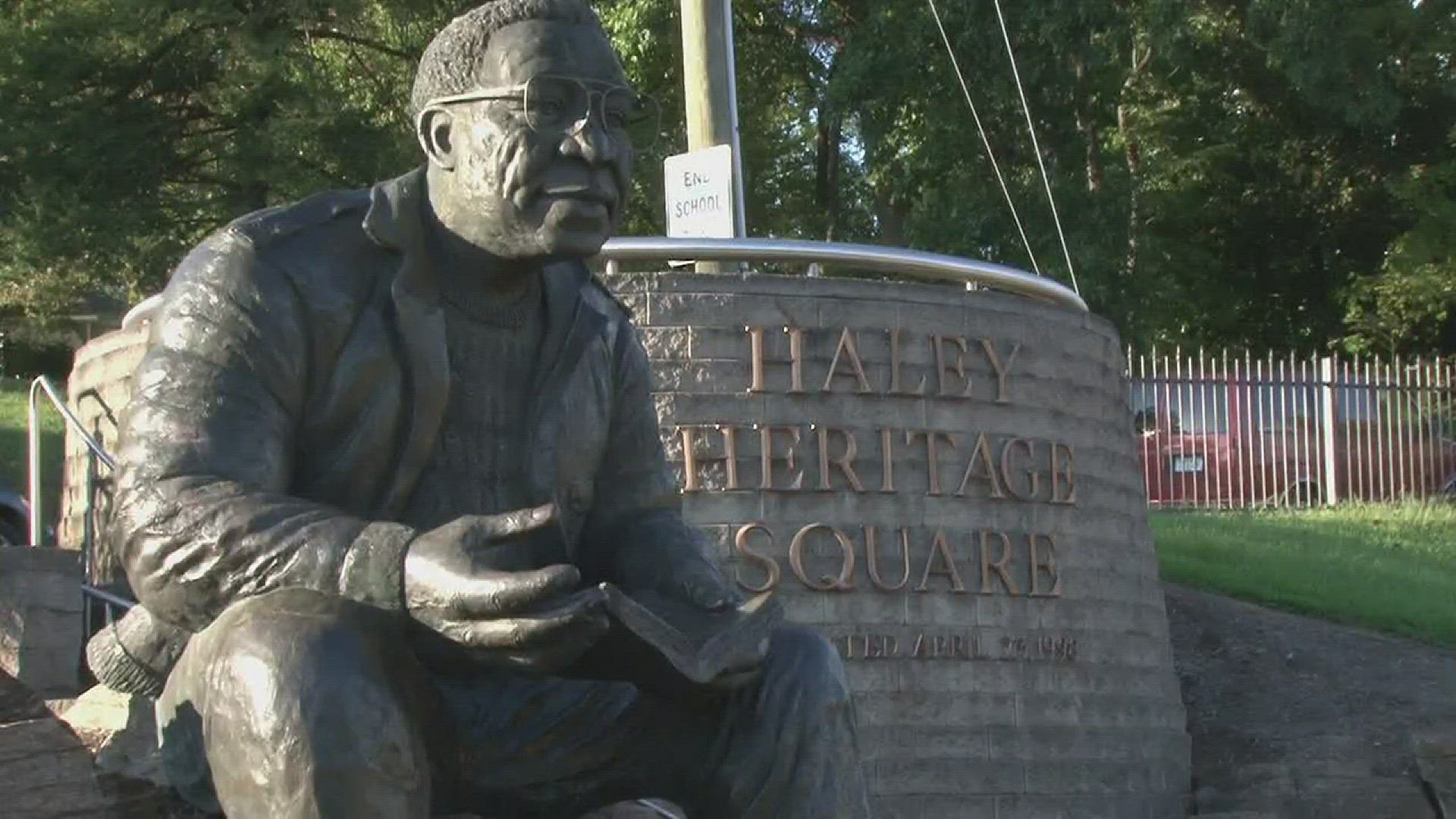
“I have a saying. It’s sort of a credo of mine. It’s not original to me. I was driving one day in Los Angeles, and I saw on a bumper sticker ahead of me, the words ‘Find the good and praise it,’ and I believe in that. So, I guess what I would like to be most remembered for is the fact that in my writing, in my efforts, as much as I could, I tried to find the good and praise it,” Alex Haley said.
Early Life
Alexander Murray Palmer Haley was born in Ithaca, New York on Aug. 11, 1921, to Simon and Bertha George Haley. The family soon relocated to Henning, Tennessee, a town of around 600 residents some 50 miles north of Memphis.
It was in Henning, at the home of his grandparents, Will and Cynthia Palmer, that Alex discovered his love for storytelling.
“You’d just sit there with your mouth open listening to your venerated grandfather tell, with a measured cadence, the stories that had come down. What was happening on that front porch or in those living rooms, those Sundays, early afternoon as the rule, the culture of that area was filtering down from the mouths of the elders," Haley said.

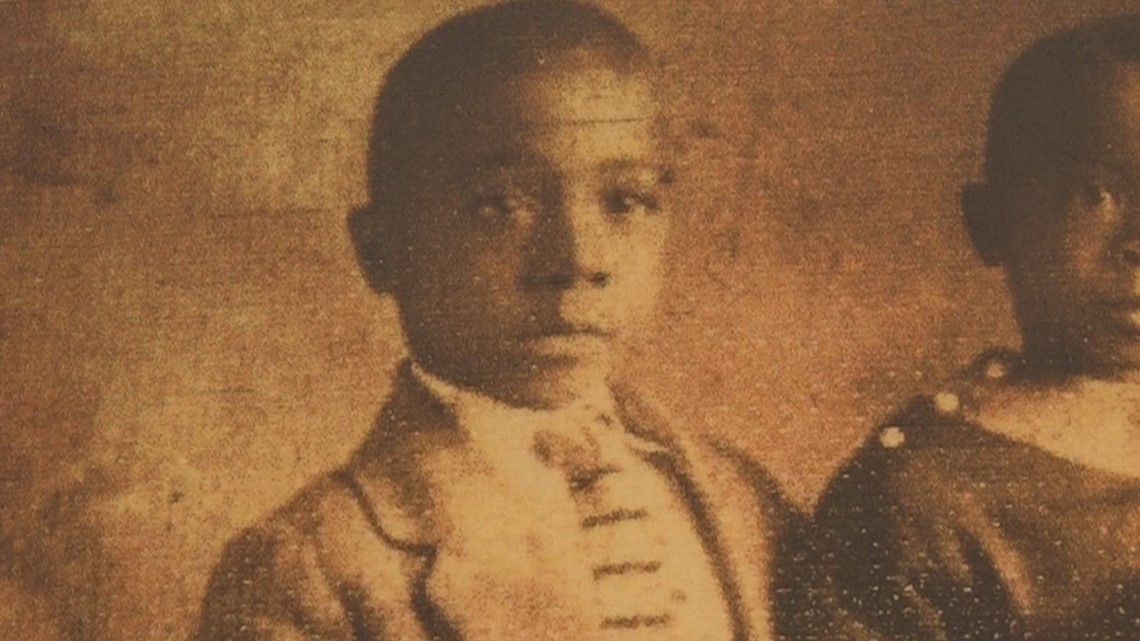
Will Palmer was the owner of a local lumber company and grew ill in 1926. He eventually succumbed to his ailments while in his bed at home. Upon witnessing this, a young Alex ran down the street to his father who was tending to the lumber company, screaming that his grandfather had passed away.
“There’s a saying in Africa, West Africa anyway, that when an old man dies, and an old woman would be as well, it is as if a library has burned to the ground," Haley said.
Following Will’s passing, his grandmother invited all five of her sisters to stay the summer at the Palmer home. It was during this time that Haley began learning of his African heritage.
“They would sit out on the front porch a lot of times, and during that time, the elders would be talking. They would repeat the oral history of their family. He would just be there, and he would just be tentatively listening to them. That’s where he heard a lot of his stories," said Charletta Campbell-Norfolk, former director of the Alex Haley Museum.


Haley would go on to get his formative education, graduating high school at the age of 15. From there, Haley went on to college before dropping out to enlist in the United States Coast Guard.
Coast Guard
“He originally said that he liked the uniforms of the Coast Guard the best, and that’s why he picked the service. Later on in an interview, he said the Coast Guard had three-year enlistments as opposed to four-year enlistments and that’s really what drove him to our service,” said Commander Matthew Kroll, the U.S. Coast Guard chief of media relations.
Alex began his career at sea stationed on the United States Coast Guard Cutter Mendota. Unfortunately, job opportunities were slim for African Americans in the service, and Haley had to settle for a job as a mess hall attendant.

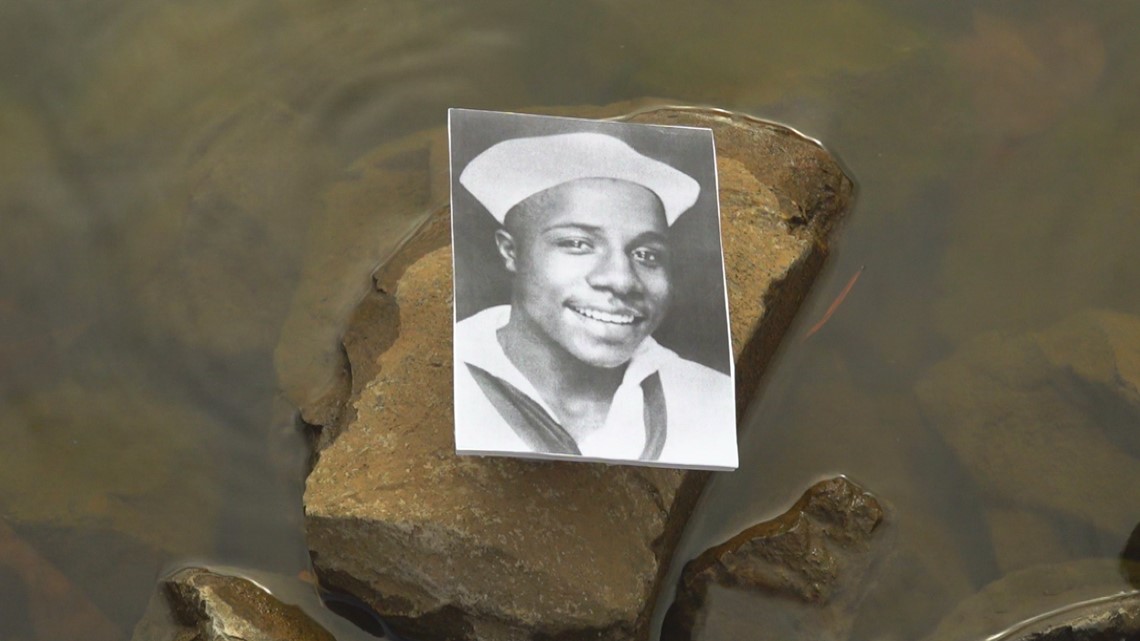
Alex took his new assignment in stride and quickly found himself rising through the ranks within the Coast Guard.
“Within a year he was on a different ship learning to be a Steward’s Mate and did a lot more of the actual cooking for the ship and was actually a first-class petty officer very quickly, and that’s where he went to the Coast Guard Cutter Murzim. That’s where his writing career took off,” Kroll said.
Armed with his typewriter, Alex spent his nights on the Atlantic Ocean writing romance stories and articles about the Coast Guard with the hopes of them being published.
Alex’s direct supervisor, Petty Officer Percival Scott, took notice of Haley’s time at the keys and formed an idea. Scott began having Haley type up letters to his friends and family back home.


Alex and Scott’s relationship proved pivotal in Haley’s early writing career. When one of Haley’s crew mates received a “Dear John” letter, Scott implored Alex to write a letter back to his mate’s partner.
“If you remember, Alex was typing all these romance stories, so he had all these great prose to put in there, and Scotty was a very personable person as well. Between the three of them, they were able to save the relationship," Kroll said.
Word got around the cutter of Haley’s way with words, and soon after his first romantic writing endeavor, he began charging his crew mates a fee to write letters to their loved ones.
It was during this time that Alex noticed that his cutter was missing its own newspaper, so he took it upon himself to establish The Seafarer.
Alex saw the effect that not receiving letters during mail call had on his shipmates, and wrote an article in The Seafarer to encourage families of Coast Guard members to send letters to their family at sea.
The article spread very quickly and was picked up by various newspapers around the country.

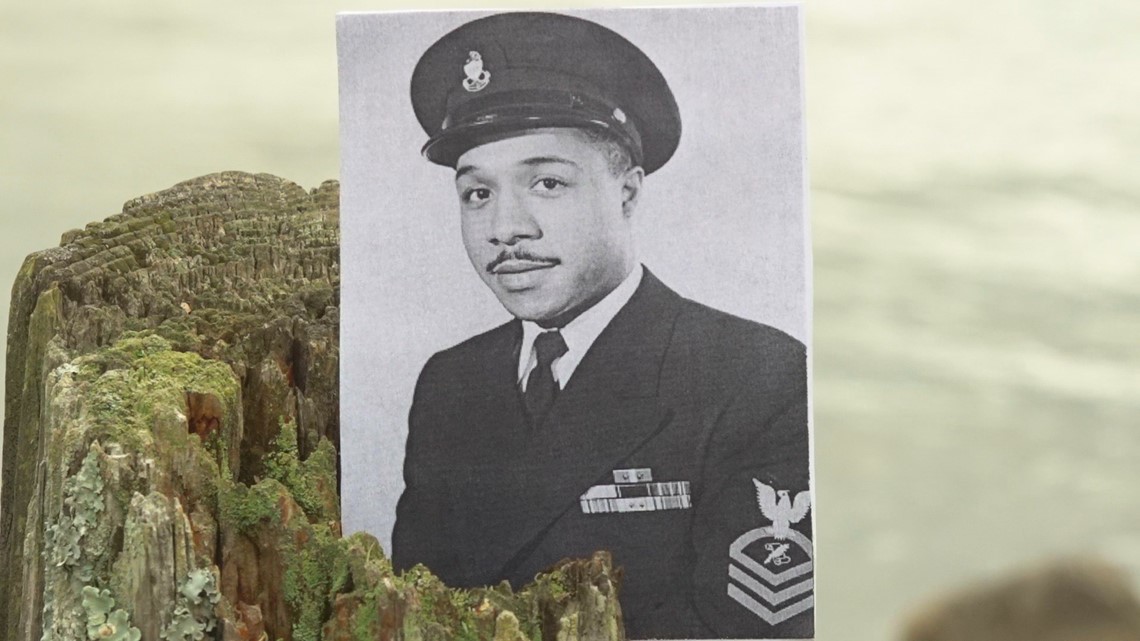
In 1946, Alex gained rank once again, this time to Yeoman First Class Public Information in New York City.
From constant rejection, Alex found himself now selling one out of every 12 articles, then one out of every six, then four and so forth.
In 1949, fellow writer Glenn Kittler approached Haley about information to write his own piece about the Coast Guard. Over the course of their lunch, Haley waxed poetic about his dreams of becoming a writer and his time spent in the military.
Kittler informed Alex that the national publication, Coronet magazine, was looking to purchase 600-word, single-page articles, and Alex’s stories about the Coast Guard would be a perfect fit for the periodical.
By that Christmas, Haley had written four pieces for Coronet and sent them off to editor-in-chief Bernie Glaser. Around three weeks later, Haley received a call from Glaser who purchased three out of the four articles Haley had submitted.

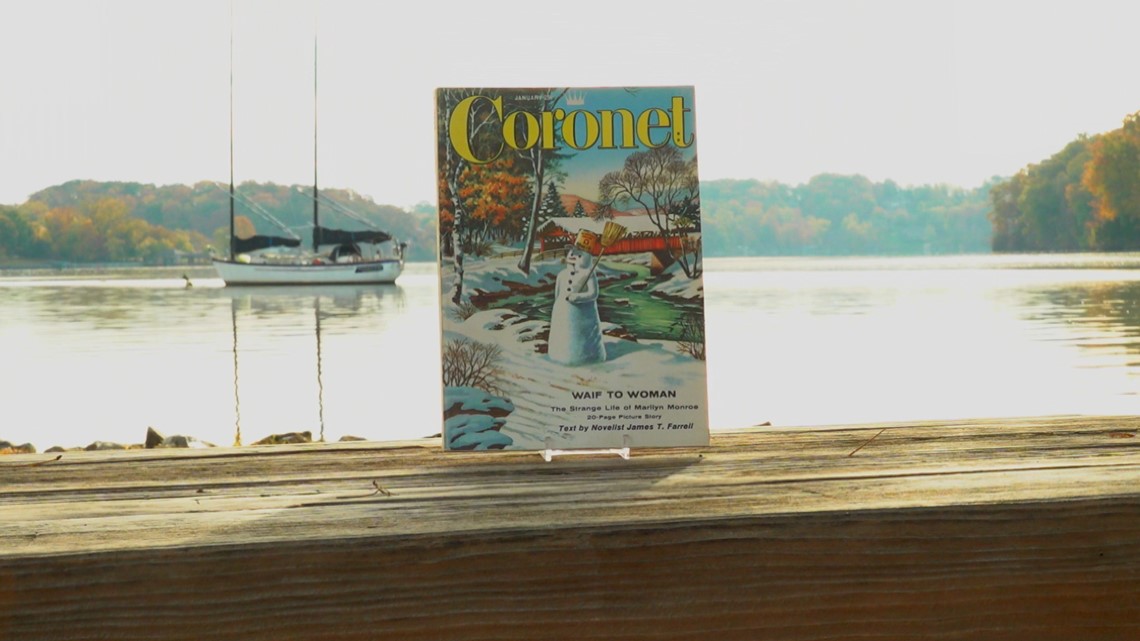
Over the next three years, Haley wrote more than 30 articles for Coronet. Most of them were under pseudonyms as he would get paid $125 instead of the standard $100 to print under a different name.
Alex went on to gain the title of chief journalist within the Coast Guard before he was transferred to San Francisco.
In 1954, Alex began his years-long relationship with Reader’s Digest magazine with the June article “The Harlem Nobody Knows.” Haley was able to highlight the advancements made by African Americans in the area over the last 50 years and showed that Harlem had truly become a Mecca for Black culture in the country.

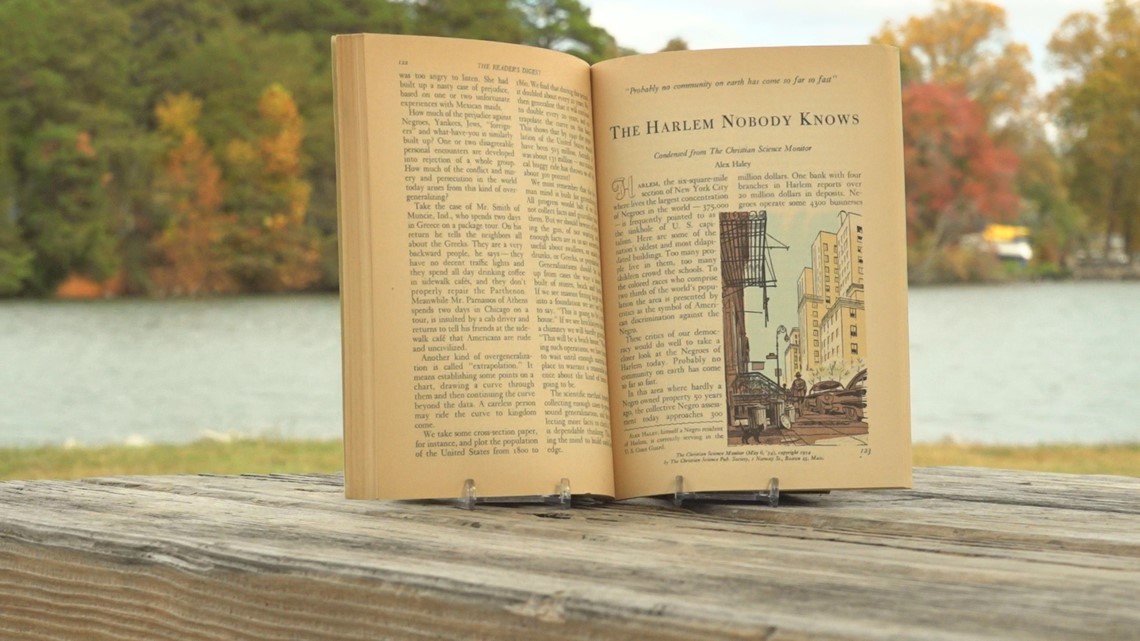
“Alex retired from the Coast Guard on June 1, 1959. Twenty years almost to the day after he joined. There was no higher rank for him to go. Towards the end of his career, the Coast Guard was authorized to create the rank of Master Chief Petty Officer for the journalist rating, and the Coast Guard had initially recommended him for that job. He was thankful for his time in the Coast Guard, but he was ready for that next step. He politely declined the offer to become Master Chief and retired," Kroll said.
Playboy Magazine
After his military retirement, Alex Haley moved back to New York into a one-room, basement apartment at 92 Grove Street in Greenwich Village.
Given his public relations background and daunted at the thought of earning a freelancer’s salary, Alex began applying to the top 25 public relations firms in the country. Having experienced racism while stationed in the western United States, Haley made sure to enclose a photograph of himself with his resume. Out of his 25 applications, only two were even acknowledged.
Determined to still become a writer, Haley wrote for upwards of 18 hours a day. Many rejections still followed, and Alex found himself down to just 18 cents and two cans of sardines. Still, the budding author was undeterred.

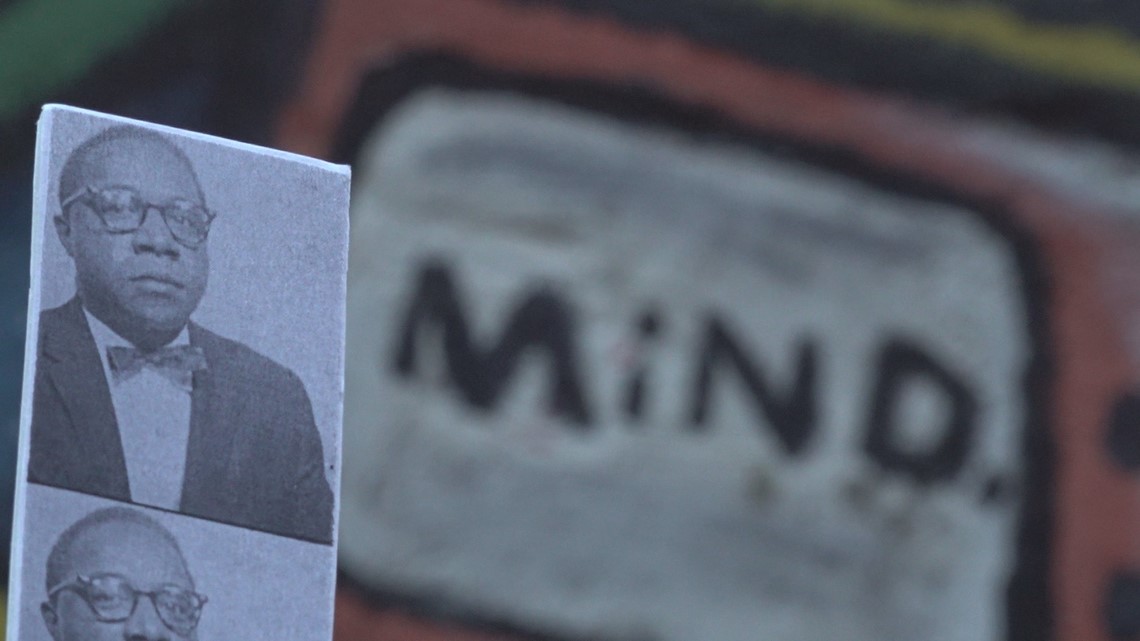
“He basically spent the 1950s hustling. He was trying to make a lane for himself, because at the time, the only publications that were featuring articles about Black America, were Black publications and newspapers. Haley saw himself as this up-and-coming Black writer in New York City who also started to make a lot of connections. Reader’s Digest, at that time, was the most-read magazine in the country. One of the features they always had was a profile. So, each issue always had a profile about, not so much a celebrity, but just someone who’s interesting, and he started to write for Reader’s Digest," said Adam Henig, an Alex Haley biographer.
During his time in the Coast Guard, Haley heard rumblings of the Black Muslim movement happening in the country and its spokesperson, Malcolm X. He began gathering materials on the group in hopes of writing about them one day.
For his new assignment, Alex dug out his old research which led to the March 1960 Reader's Digest article entitled “Mr. Muhammad Speaks,” about Elijah Muhammad, the leader of the anti-White, anti-Christian, Nation of Islam.
The piece served as an unbiased, honest look at the Nation of Islam, and allowed Alex to lay the foundation for his relationship with Malcolm X.

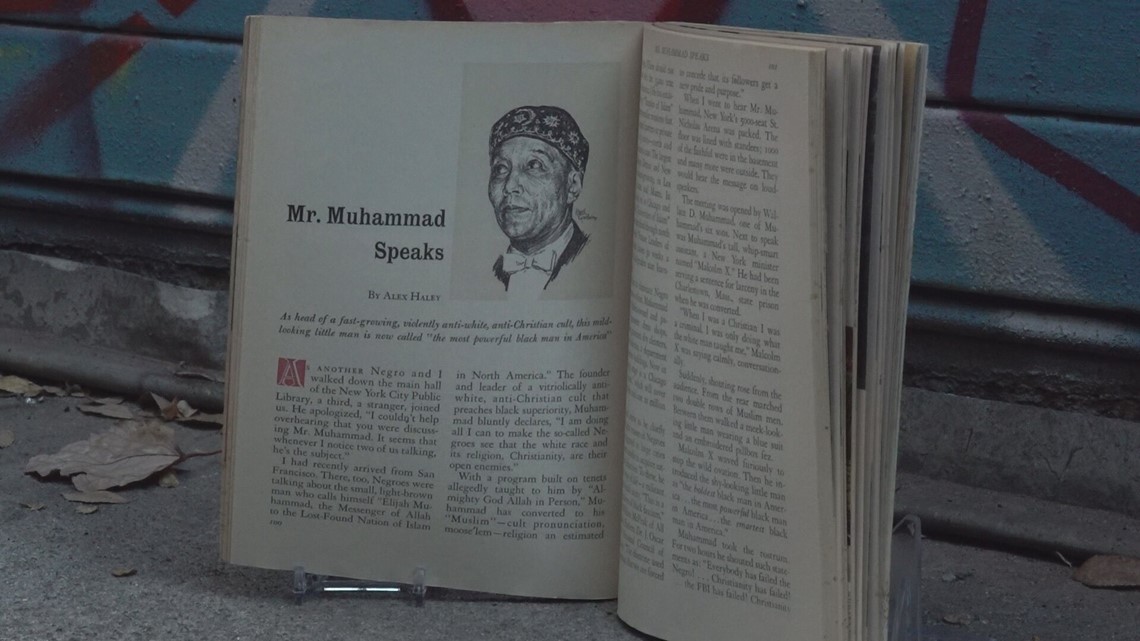
The success of “Mr. Muhammad Speaks” led to Haley enjoying several more articles published within a plethora of the nation’s largest publications over the next three years.
In the early 1960s, Playboy magazine was gaining popularity. Publisher Hugh Hefner was looking to expand the content within the magazine's pages, and came up with the idea for the "Playboy Interview."
Alex Haley got in touch with the editors of Playboy magazine, and through the connections he had made in New York, informed them that he could get access to the reclusive jazz musician, Miles Davis.
Due to his distrust of the media, Davis was oft regarded as a tough interview. The piece would be a big get for both Playboy and Haley. The interview, however, may have been a painful one for Alex.
“In his off time, when he wasn’t playing the trumpet, he was a boxer. So, Alex found him boxing up in Harlem. Haley walked in and said, ‘Look, I want to interview you for Playboy’, and I think the only way it worked was that Haley had to get in the ring with him, and they started boxing, and eventually, Davis did the interview," Henig said.
Davis gave Haley rare insight into both Davis's personal and professional life. The format Haley had come up with for his maiden voyage at Playboy would be used for years following the issue’s release in September 1962.


Through the remainder of the year, Haley conducted more interviews for Playboy. Given their success and popularity, Haley was offered an unaltered and unedited interview with Malcolm X.
Malcolm and Alex had met in Harlem in 1959 after multiple failed attempts by Haley to land an interview with the Black Muslim leader.
Malcolm X was wary of the media, as earlier in 1959, CBS aired a one-sided account of the Nation of Islam entitled “The Hate that Hate Produced.”
Malcolm’s first words to Haley were, “You’re another one of the White man’s tools sent to spy!” By 1962, however, it seemed the relationship between Malcolm and Alex had smoothed over as Haley insisted that the Playboy interview was a chance for Malcolm’s true words to be read by a primarily white audience.
Malcolm acquiesced, but before either would agree to the interview, Playboy had to put in writing that Malcolm’s responses would be printed verbatim. The magazine agreed and Alex Haley’s interview with Malcolm X appeared in the May 1963 issue of Playboy magazine.

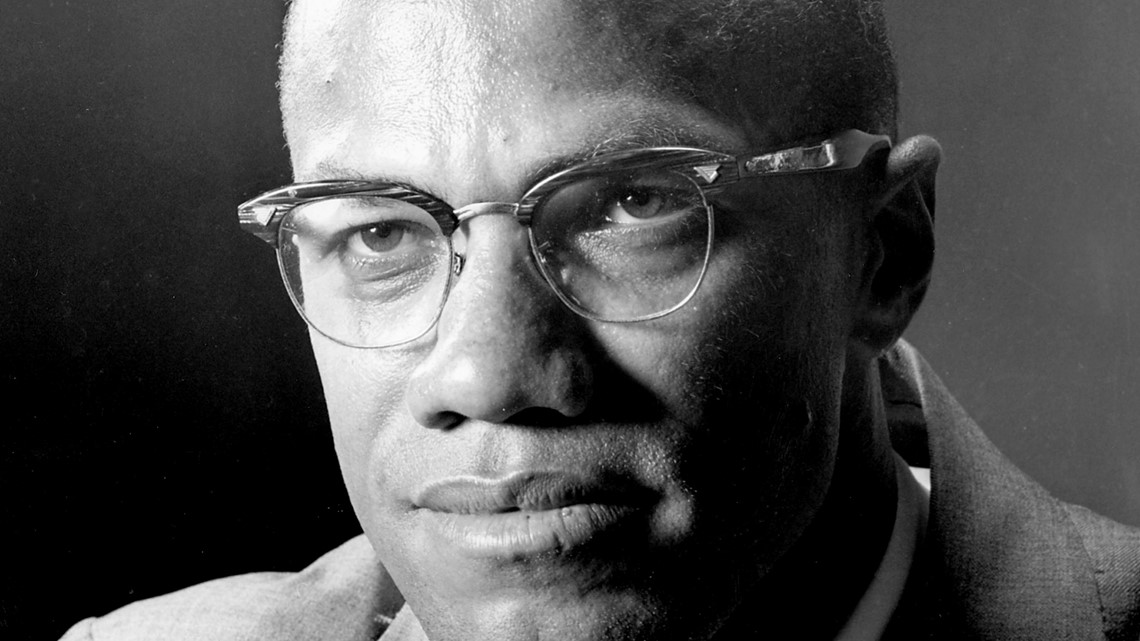
Haley continued interviewing prominent Black figures of the time, including Cassius Clay, Quincy Jones and Sammy Davis Jr., and had gained the title of chief interviewer for Playboy.
Eventually, he would get the opportunity to interview who many considered the leader of the American Civil Rights Movement, Reverend Dr. Martin Luther King Jr.
“Alex had developed a real reputation among Black America. He was becoming a real household name. He knew athletes. He knew entertainers. He knew politicians, but of course, Martin Luther King was the leading Black figure in America," Henig said.
Nailing down King for any lengthy period proved a monumental task for the now 43-year-old Haley. Alex’s first two trips to visit King in Atlanta bore no fruit as the civil rights leader was never in a town for any extended amount of time.
Haley even tried several times to catch King at the airport in between flights with no success. Alex was aware that King was hesitant to be seen in a magazine that featured photos of nude women but still pushed forward.

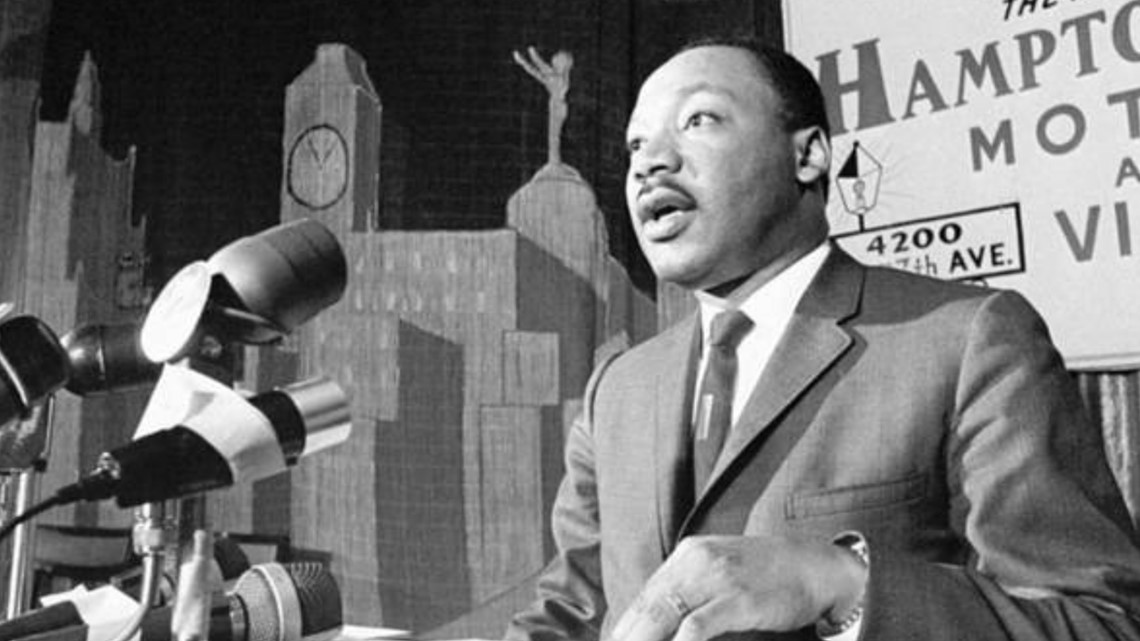
“He’s got a whole entourage of people who are coordinating his schedule. The way to get to Martin Luther King, in terms of wanting to schedule him for something, was his secretary," Henig said.
Haley finally got in touch with King’s secretary, Dora McDonald, asking for any amount of time with the reverend. McDonald made no promises, but she did point Haley in the direction of a church barbecue that King would be attending. Her advice to Alex was, “Let him see you there, and don’t press.”
Haley attended the barbecue, made his presence known, and was approached by King who admitted that there was mutual interest in doing the interview for Playboy. Much like Malcolm X, it would afford King the means to get his message out to the middle-class whites who purchased the book every month. King agreed and granted Alex Haley what would be the longest interview that he ever gave to any publication.
Autobiography of Malcolm X
The popularity of Malcolm X’s Playboy interview prompted Haley to pursue a deeper dive into the life of the Black Muslim leader. When Alex pitched the idea of doing a biography on Malcolm X to his agent, the author was swiftly shut down as his agent feared that no one would publish a book on the controversial figure. Regardless, Haley persisted and pushed forward with his idea.
To even begin this new venture, Haley would first have to gain permission from Elijah Muhammad. The two met at a coffee shop and by the end of their conversation, Haley was given the go-ahead.
As with their Playboy interview, Malcolm’s statements would not be edited, and even though the two had previously worked together, the process of writing the biography didn’t start off as smoothly as Haley had hoped.
“There was a little bit of frustration between the two because Haley really wanted an autobiography. He wanted the personal story of Malcolm X, and Malcolm X was lecturing more, preaching about his beliefs, about the beliefs of Islam. So, there was a little bit of a mismatch there of the vision of what the final product would be," said Jennifer Beals, director of the University of Tennessee Special Collections.
After many sessions of seemingly getting nowhere came a breakthrough. Haley asked Malcolm about his mother, and the rapport between the two opened up.
“If I recall, it was late at night, and they were tired perhaps, and that kind of set Malcolm off on talking about his mother and how hard she worked, and it was something he felt very deeply about and sentimental,” Beals said.

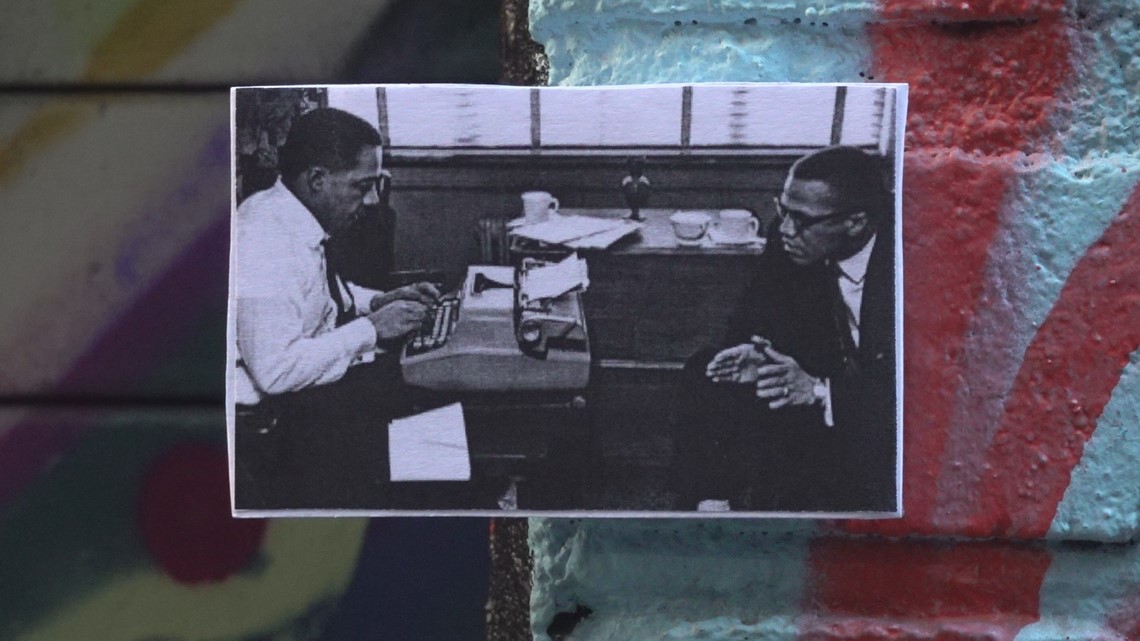
From 1963 to 1965, Alex Haley conducted more than 50 interviews with Malcolm X to gather stories, memories and details for his book entitled "The Autobiography of Malcolm X." In one of their final interviews, Malcolm told Haley, “I do not expect to live long enough to read this book in its finished form.” His words proved prophetic.
Two weeks after the initial manuscript was finished, Malcolm X was assassinated while giving a speech to his organization of Afro-American Unity at the Audobon Ballroom in Washington Heights, Manhattan. This event threatened the fate of Haley’s first novel.
“Doubleday canceled the publication after the assassination of Malcolm X because they felt it would be too controversial," Beals said.
After shopping around his manuscript to over a dozen different publishers, it was finally picked up by Grove Press.
“It became a best-seller because Malcolm was in the news, and he had died so violently, and to this day, it’s probably the best-selling memoirs of all time,” Henig said.
Released on Oct. 29, 1965, "The Autobiography of Malcolm X" went on to sell over 5 million copies.
Roots: The Novel
For Haley’s next novel, he would draw inspiration from the stories he heard on the front porch of his childhood home in Henning.
"He was doing a Playboy interview. It was with this actress, Julie Christie, and he was going to meet her on the set of her movie, and she wasn’t in the mood to meet with him. This was in London. So, he leaves, and he goes to this museum where the Rosetta Stone is located. Whenever he was staring at it, for whatever reason, it triggered this sense of wanting to know about the past and wanting to write about it," Henig said.
In 1964, while still writing "The Autobiography of Malcolm X," Haley pitched to his publisher a novel about the history of his family dating back to their origins in Africa. With the working title of “Before This Anger," Doubleday gave Haley an advance of $5,000 to begin research on his new book.
Armed with only the misspelled name of “Kunta Kintay” and some phrases of an unknown African language, Haley embarked on his journey to learn more about his family tree. He visited many libraries that held information on slavery in America without much luck, until one day at a library in Washington.
“He began looking at all the microfilm and all the different people who had been in slavery and things of that nature. He spent maybe two and a half hours there, and he really wasn’t getting anywhere. So, he went down a hall and looked in a genealogy room and saw people who were really engaged in looking and wanting to learn, so he said, ‘There’s something to this. Let me go back up.’ So, he went back up and spent another couple of hours, and while he was there, he found the name Kunta Kinte," Campbell-Norfolk said.
Spurred on by his research, Haley sought the help of linguist Jan Vansina who informed him that the phrases in his possession were more than likely from the Mandinka tribe in Gambia, West Africa.
With this new information, Alex Haley made his way to the village of Juffare where his ancestors once lived. Once there, the 70 or so residents of the village welcomed Haley with open arms.

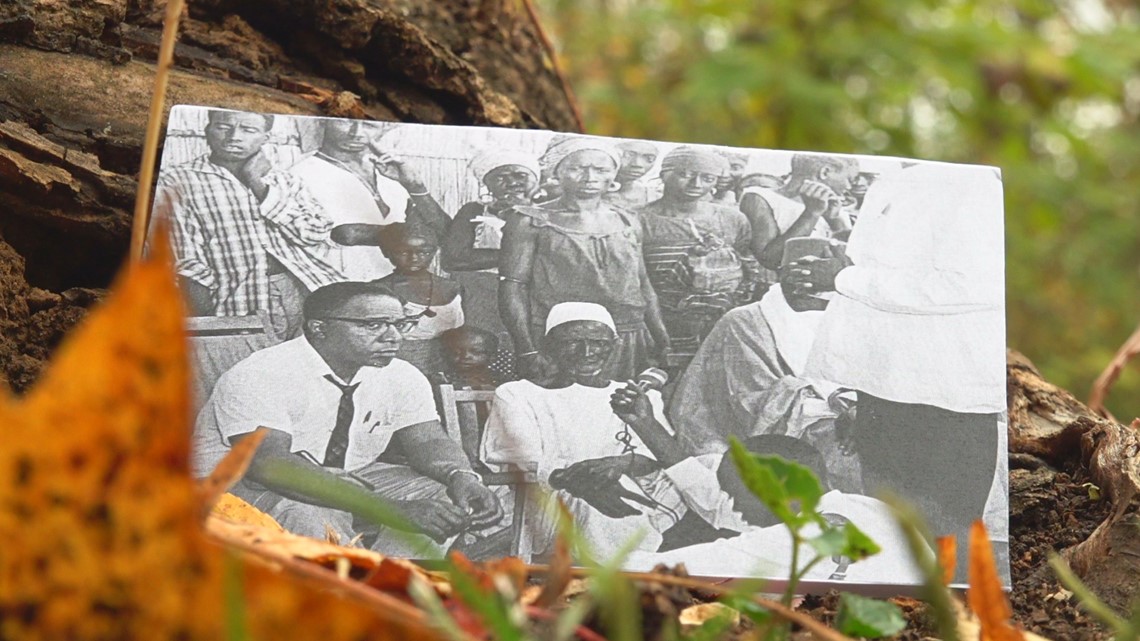
“They put him in the middle of a big circle, and they would take their kids and give them to him one by one. One by one. They were saying that we trust you and we are welcoming you back into our country, because you were taken as a descendant of a slave, and you now have returned back to our land, and we’re glad to have you here," Campbell-Norfolk said.
In Juffare, Haley wrote for three whole days and nights as the village griot painted a picture of the past 500 years of Alex's family history.
The author’s research did not end with the griot’s teachings. While in Gambia, Haley spent time on a slave ship to get a sense of what his ancestors had to endure, a practice he would emulate during the writing of his novel as he spent time penning the book on cargo steamers as they sailed across the ocean.
During the years of his research, Haley returned once again to Gambia, but the quest to complete his novel was taking its toll.
“He had very little ties with his family, and he was ready to end it, but he kept it going. I think he kept it going, as he put it, because his ancestors said, ‘You have to do this. You have to do this for us. You have to do this for all the Black slaves and families who had to endure so much,' and so, that kept him going," Henig said.
The process of writing his new book, now entitled "Roots: The Saga of an American Family," took Alex Haley 12 years, a far cry from the two-year deadline of Doubleday.

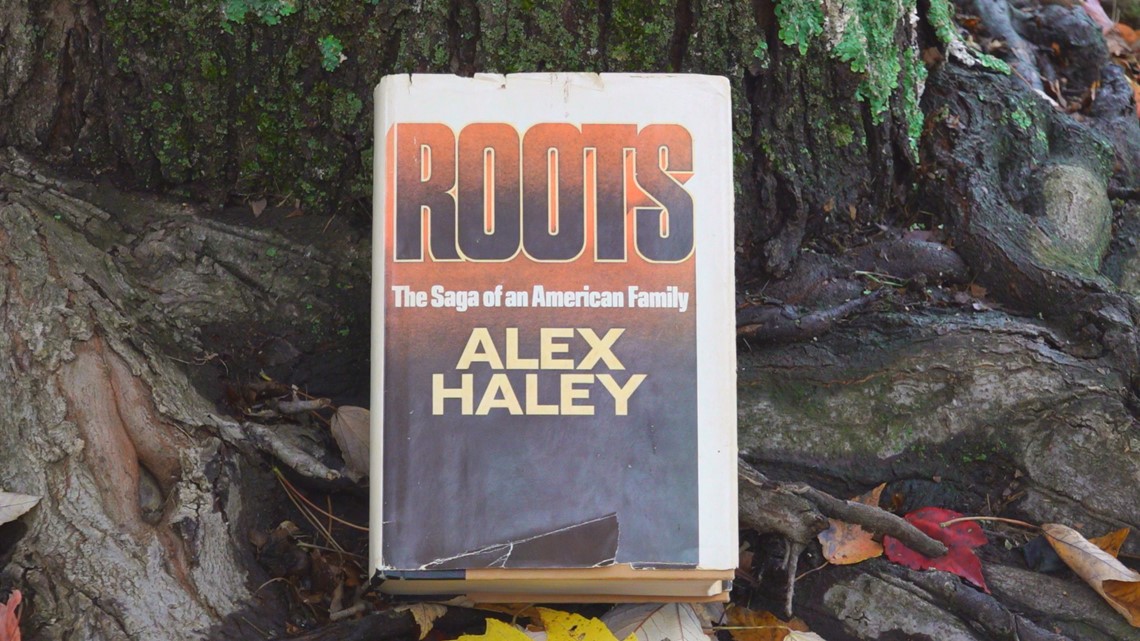
The cost of his research totaled $96,000 and was funded in part by the owners of Reader’s Digest, who had published two excerpts of Roots prior to the book’s release, which was in the works up until the last possible moment.
“As they were just about ready to go to print, he was making changes on the final copy. That’s why the book doesn’t go all the way to him. It stops because he just couldn’t finish it," Henig said.
"Roots: The Saga of an American Family" was finally released on Aug. 17, 1976, to favorable reviews. The novel debuted at No. 5 on the New York Times best-seller list and landed in the number one spot by mid-November where it stayed for a total of 22 weeks.
Within seven months, Alex Haley’s new novel had sold over 15 million copies.
Roots: The Miniseries
Being produced concurrently with the book, Roots the miniseries was an eight-night television event chronicling Haley’s newest novel. Beginning on Jan. 23, 1977, Roots became appointment television for families across the country.
“For those many, many nights, the night before they always left you engaged with something that would pull you back and you had to get back to the TV, and the family sat down together to watch the TV to see exactly what was going to be coming on next. It was heart-wrenching. They wanted to see it. They wanted to know and experience what families went through back in that time," Campbell-Norfolk said.

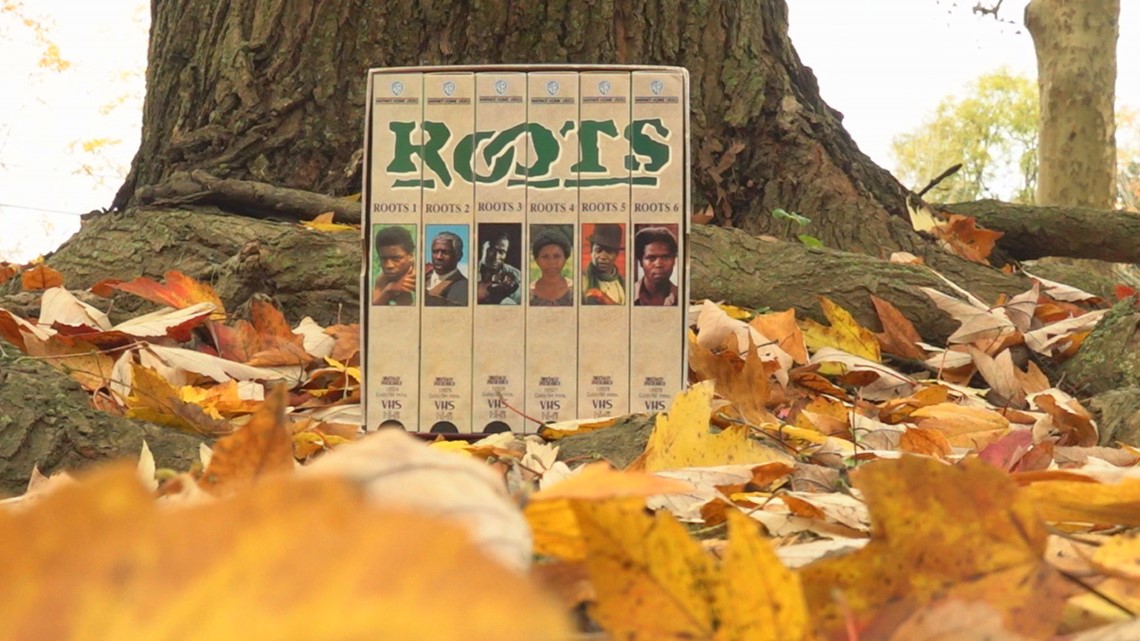
An estimated 130 to 140 million unique viewers tuned into Roots, making it the most-viewed television series in history at that time as tallied by Nielsen Media Research. The finale drew in an estimated 100 million people.
“It was true life for us. It was telling not only his story, but in a way, it was telling the story of all of us,” Campbell-Norfolk said.
The impact of both the book and miniseries led to an immediate cultural phenomenon of people digging into their own roots.
“The only people prior to Roots that were looking up their ancestors were aristocrats. Rich, white, old people largely living in the East. Then all of a sudden, everyone wanted to trace their Roots and there became this whole new industry and it was all because of Roots,” Henig said.
Controversy
Roots’ success made Alex Haley a household name. With his newfound celebrity, Haley took Roots on a global expedition, but with notoriety came consequences.
“While he’s on this international, global book tour, the first allegation comes to light, and it was from a British journalist. His newspaper, The Sunday Times, had sent him to where Alex Haley had said his roots were from, but as he began to interview people that were associated with the town and with the country, he began to see a lot of holes. Then he began to talk to other scholars and other people in the field and I became clear to him that portions of the story, if not significant portions, were made up," Henig said.
As a result of The Sunday Times’s findings, it was as if the floodgates had opened on the credibility of Alex Haley’s magnum opus.
Margaret Walker, the author of "Jubilee," which predates Roots by a decade, argued in court that Haley's story was too similar to hers.
“Alex Haley’s defense every time was 'They’re just jealous. I’m very successful. I’ve made millions of dollars, and everyone wants it' and this was not unusual. Every successful author has a story to tell. In Haley’s case, everyone kept coming out in droves and Haley kept using that defense, and it seemed to be working," Henig said.
That was until Harold Courlander, author of "The African" and many other works related to West Africa, opened the pages of Roots. Seeing how similar his and Haley's works were, Courlander brought his case to court.
The judge for the case read both books and also saw the similarities. Haley offered to settle with Courlander for $250,000, but Courlander pushed for more money and the two ended up settling for $650,000.

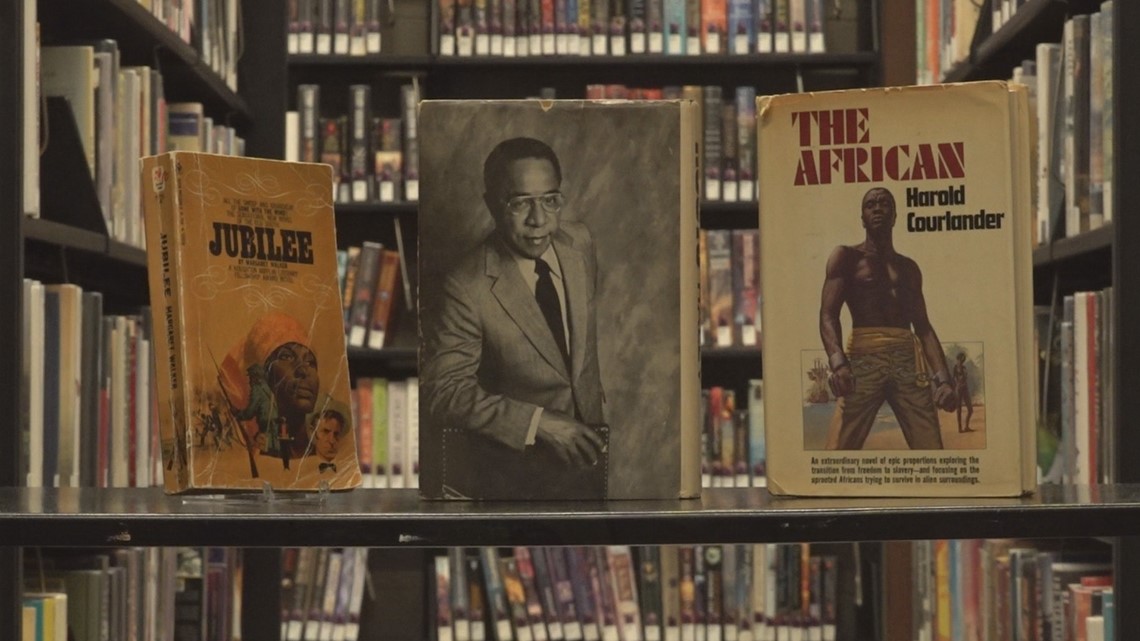
“That didn’t have that much impact on Haley either, at least in terms of the general public. What did have impact was that scholars began to see the cracks in his story and wasn’t being held in as high regard," Henig said.
Moving to East Tennessee
In 1982, the World’s Fair brought glitz, glamour and culture to Knoxville, Tennessee. The six-month extravaganza hosted exhibits from countries all over the world.
To celebrate African American Day, Alex Haley joined in the festivities to share his wisdom.
“I have this deep conviction that history is something very living, actually. Not something old and dry as dust, and I’m very much aware that we, every day, are part of the continuum of history,” Haley said.
While in Knoxville, Haley discovered the inspirational catalyst that would prompt him to make East Tennessee his new home.
“My father had met him. I think they were both on the Tennessee Film Commission. They had met in Nashville and my father had invited him to see the Museum of Appalachia. Then when he came to the World’s Fair, my father ran into him again and said, ‘Hey! Come out to the museum’ and he said, ‘Ok’ so he came, and halfway through going through the museum, he literally called his assistant, Jackie Nipo in LA and said, ‘I’m moving to Tennessee,'” said Elaine Meyer, owner of the Museum of Appalachia.
Alex moved into a back bedroom in the Meyer home and quickly became a surrogate member of the family.


The author soon bought an old farm property down the road from the Meyers in Clinton, Tennessee.
“He had never actually owned a home, and at the age of 61 years, he purchased this home. He had never owned anything in his life. When Mr. Haley purchased it, this house had been unoccupied for 30 years. The animals actually roamed freely in it. The house had no kitchen, no bathroom, no electricity. There was actually no plumbing in the home," said Kathy Stooksbury-Long, Haley's former housekeeper.
Haley renovated the home, and captivated by the area and its people, he began research on a new novel.
“The more I moved around in East Tennessee, the more I began to feel book potential. It felt like a book. I am now in the early stage of research, The one where you’re just kind of poking around not really digging into it, but I’m collecting things. I was kind of pleased this past weekend I spent with Governor Alexander and his wife, Honey. The governor, as soon as we got together says to me says, ‘Alex, I got one for you.’ He said, ‘All mountain graves face east. The reason is all the mountain people know it. It’s in the Bible that God when he returns will come from the east. None of the mountain people want to have their backs to God when he comes, so all mountain graves face east.’ And I immediately grabbed my little notebook, and it’s in there, and I assure you that somewhere in this book, that will appear,” Haley said.
The author saw no trouble in approaching a story about a culture so different from his own.
“I wish that we could come, us as human beings, into a time, that we would be less concerned if somebody was Black, or yellow, or red, or something or other, and I know that will be a time to come, but I like to feel that one of the reasons I like East Tennessee is because I have found more of that tendency than I have found in most of the places I have been in the world,” Haley said.
Due to the popularity of Roots, television producers had already been in touch with Haley about his yet-to-be-written Appalachian epic, but the author wanted to make sure he did justice to his newly adopted home.
“We’ve looked around the neighborhood with different other people. We’re starting to get a concept of what this is going to be, and all I really can say is that I want it to capture, as best I can, to convey as best I can, to the world as best I can, what the culture of Appalachia is like, East Tennessee is like," Haley said.
Unfortunately, Haley would never see his Appalachian novel to fruition.
Death
“He walked out the door here of the white house and got into a car. He was going to speak at a university in Seattle, Washington,” Stooksbury-Long said.
After arriving in Seattle, Alex Haley died of a heart attack shortly after midnight.
Alexander Murray Palmer Haley was 70 years old. The impact of his death reverberated in the place he had called home in his final years. Flags flew at half-mast all around Knoxville to mark his passing.
Mayor Victor Ashe issued a statement calling Alex Haley a treasure who was able to make us imagine a more decent world and ask ourselves “Why not?” The citizens of Knoxville echoed the mayor’s sentiment.
“He was just one of the ones that showed that wherever you’re from, you can stand up and feel good about yourself because first, you are a person," said Knoxville resident Erica Batman.
Those that got to know him during his time living in East Tennessee were hit especially hard by Haley’s passing.
“Alex Haley was one of the most beautiful men I’ve ever seen in my life, I guess. He seemed to want to help people. In fact, I believe it did him more good to help someone else than it did for the person he was helping," Haley's friend Carlock Stooksbury said.
Alex Haley’s funeral was held at the Greenwood C.M.E. Church in Memphis. Hundreds turned out to recall Haley’s life as a patriot and storyteller. Friend and former Tennessee Governor Lamar Alexander was one of the many to pay their respects.
“When he came back to Tennessee, he gave of himself in an absolutely extraordinary way. He was among the most famous people in the world, and he would accept any invitation to go out to any school and make a little talk. He was really God’s storyteller. I’ve been to Detroit, New York, Washington, D.C. this week. The schoolchildren know about Alex Haley. The papers are full of Alex Haley. His books on Malcolm X and Roots changed the way we look at our families and the way we look at ourselves," Alexander said.
Also among the mourning was the man who brought the character of Kunta Kinte to life, actor LeVar Burton.
“He was famous for, when making a speech at some hotel, spending so much time in the kitchen where the help was. Whether you were a head of state or you washed dishes for a living, he always had time for you. Alex was all about family, and it’s just really sad that he’s gone. It’s just really sad," Burton said.
From Memphis, Haley’s body was transported to his childhood home in Henning. People lined the streets as Alex Haley was laid to rest on the front lawn. Before his burial, a ritual was performed with roots in Haley’s African heritage.
“The family had brought back West African soil from the actual place where Alex’s family is from. They sprinkled soil over Alex’s body. The family had to dance around his open tomb in order for his spirit to be released. That’s what happened on that day, Feb. 15, 1992," said Richard Griffin, the Alex Haley Museum Site manager.
Legacy
Prior to his death, Haley was writing another story about the history of his family, specifically his grandmother’s branch. "Queen: The Story of an American Family" was finished by David Stevens who used over 700 pages of notes left to him by Haley, as well as many hours of conversation with the author. The dual-authored novel would go on to become a miniseries starring Halle Berry in 1993.
Shortly after his passing, Yvonne Easley, founder of the Appalachian African American Arts Organization, began lobbying Alex Haley Square to be constructed in Morningside Park in East Knoxville. It would include a playground and a 13-foot bronze statue of Alex Haley.
Sculptor Tina Allen was given the herculean task of creating the statue in the likeness of Haley. Completing Haley Square would take plenty of funding, and before long, both Allen and Yvonne Easley found themselves overseas in Paris at the 1993 Glamour Jazz Celebration to raise money for their project. The two received plenty of international support.
“I never thought in a million years we would be in Paris doing what we’re doing. It’s because people love Mr. Haley. They love what he represents,” Easley said.
While Easley and Allen pressed forward, there were still questions about what to do with Haley’s land.
“There was a group of developers that wanted to turn it into a golf course, with housing for people to come and golf and spend the weekend, and I just shudder every time I think about that because this place is such a special place. It’s almost like sacred ground,” said Theresa Venable, Children's Defense Fund librarian.
In 1994, the non-profit child advocacy organization, the Children’s Defense Fund, purchased the Haley estate. The property was to be used as a retreat for the CDF’s programs, and they made sure their mission fit Alex Haley’s vision.
“We have our freedom schools reading program. We create the curriculum; we provide it to organizations throughout the nation. Then we want those literacy coaches to come here and understand the legacy of Alex Haley, telling stories. Bringing those stories to life,” said Kenneth Libby, CDF employee. “We want to open up the potential for all those children, and all the potential for all Americans, and I think that’s something else that Alex Haley helped us to understand.”
Aside from a few setbacks from the city of Knoxville, things were moving smoothly for the Alex Haley Square project, and by 1997, construction was well underway on Haley Heritage Square.
On Nov. 27, 1997, the Alex Haley statue finally arrived at its new home in Morningside Park. Despite all the setbacks, Allen was proud to see it finally at home in Knoxville.
“When you have someone who loved the town as much as Alex loved this town, and you see a town that’s primarily a white community and a black community come together to say ‘You’re just a great citizen. We’re not going to forget you.’ It makes you feel like personal effort pays off,” Allen said.
On April 24, 1998, years after the initial vision, the Alex Haley Statue at Haley Heritage Square was set to be unveiled. Thousands of people gathered at the park and the dedication seemed the only fitting way to celebrate America’s storyteller.
In life, East Tennessee was Alex Haley’s adopted residence. With the unveiling of the statue, it became his everlasting home.
At the time, the Alex Haley Statue was the largest statue to pay tribute to an African American in the country, and Roots actor, Louis Gossett Jr., felt it was only fitting.
“Here you sit in front of the number one community in America to tell your stories for many, many generations," Gossett Jr. said.
In October of 1992, Alex Haley’s belongings were put up for auction to offset some of the debt that was left behind after his death.
Items such as research materials, notes from his Playboy interviews, and original manuscripts were among the over 500 items up for sale.
The University of Tennessee of Special Collections purchased many items from the auction to go along with the items Haley had donated the previous year.
Containing photos from his trip to the Gambia, notes on the Roots mini-series and original drafts from “Mr. Muhammad Speaks,” the Haley collection at UT is a massive treasure trove of the author’s history with much still to be uncovered.
“It is about a hundred linear feet. That is of the processed material that we received in ’91 and ’92, but in 2019, we received an additional approximately 100 linear feet from the family, the descendants of Alex Haley," Beals said.
One item that was not sold at the auction held important historical significance and lay untouched for almost three decades, the desk where Alex Haley wrote his many works.
“It ended up at an auction facility in Johnson City, Tennessee and no one really wanted it. So, after 30 years, and 2022 on Memorial Day, I get a phone call, ‘Would the center be interested?’ and I said, ‘Yes, of course,” said Robert Carson, co-founder of the Appalachian African American Cultural Center.
The AAACC is located in Pennington Gap, Virginia. Converted from an old one-room schoolhouse, the center is home to artifacts from all facets of Black Appalachian history, and now, the desk of Alex Haley, which came with a surprising price tag.
“The desk was $100. With tax, it was $109.50. That’s the desk and the credenza. I can only imagine sitting at that desk and putting your ear to it, and just hearing Alex Haley as he sat there and all of his creative juices flowing and writing Roots, Queen, The Autobiography of Malcolm X, and all the writings he did for Reader’s Digest. It’s just amazing of all the writings and the works that Alex Haley did. I just hope in some way that this center can just keep his legacy alive," Carson said.
Remembering Alex Haley
In 1989, Alex Haley received the Coast Guard Academy's first honorary degree.
The Coast Guard training facility's dining hall in Petaluma, California is named in honor of Haley.
Kodiak, Alaska is home to the Coast Guard Cutter Alex Haley.
“When you sit and look at it, Alex has an extremely impressive legacy. He’s looked at as one of our minority leaders, as someone who was able to break ground so early. If you think of where the United States and the military was in the '40s and ’50s, a lot of restrictions, and he was able to break through a lot of those. Breakthrough to the journalist rating and get outside those few ratings that African Americans were allowed to be. He broke out of that and was able to get into journalism just because of his reputation and perseverance,” Kroll said.
Alex Haley Academy, a public school in Chicago, Illinois, is home to nearly 500 students.
On June 12, 2002, the Kunta Kinte - Alex Haley Memorial was unveiled in Annapolis, Maryland at the location where Kunta Kinte arrived in America.
“Probably the only bad thing I’ve heard about him is if he told you he’d be here at 1 o’clock it would be three or four because he was so kind to everyone along the way. Everywhere you go, you leave a footprint, and you leave something better than before you arrived. Anyone he came in contact with was better off after they came in contact with him,” Meyer said.
In 1977, the novel of "Roots: The Saga of an American Family" won a Pulitzer Prize.
The Roots miniseries was nominated for 37 Primetime Emmy Awards, winning nine.
“It is argued that he had as much impact on improving race relations in America as much as Martin Luther King. I don’t think there’s an event in the 1970s with regards to civil rights and race that has had as much impact as Roots did. For that alone, I think he needs to be acknowledged,” Henig said.



